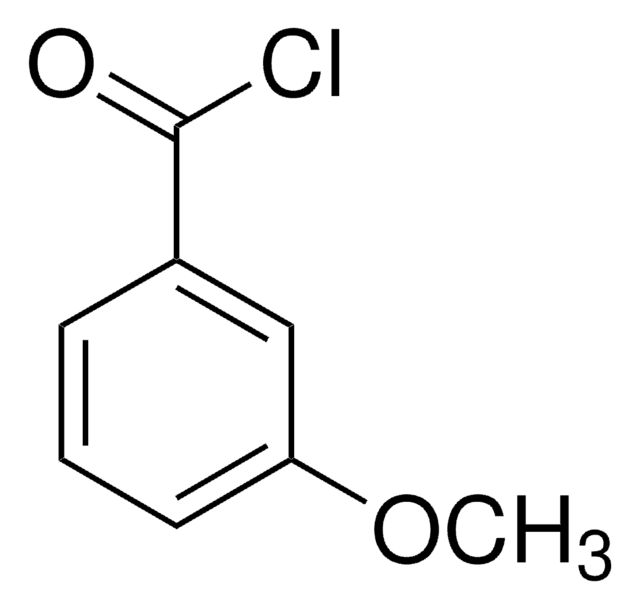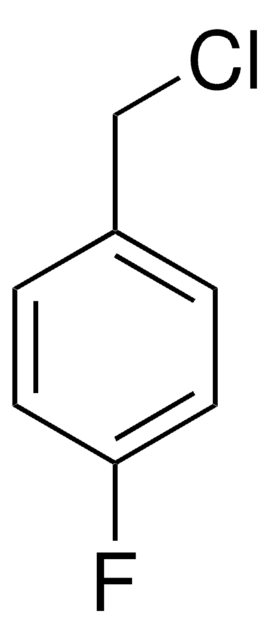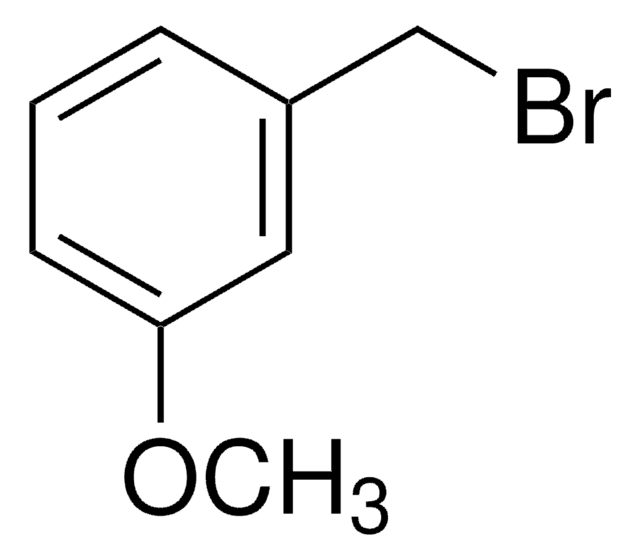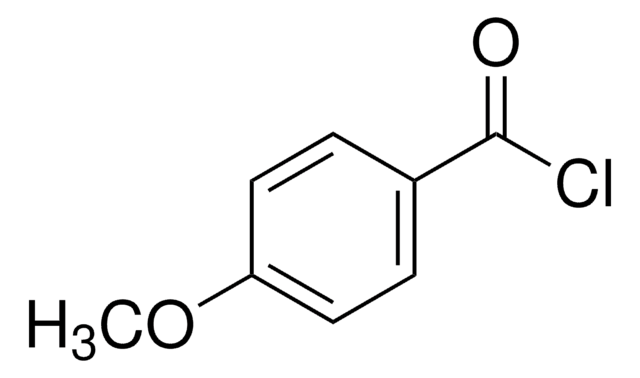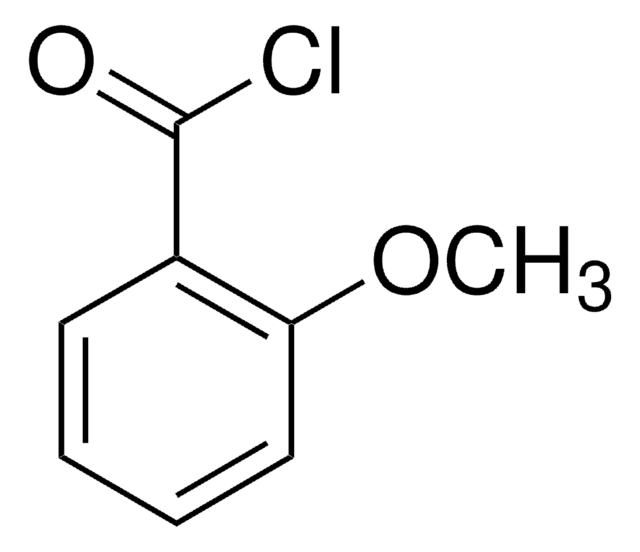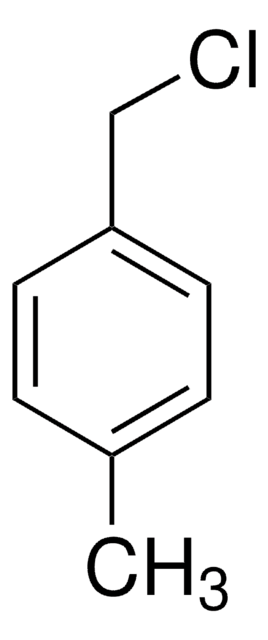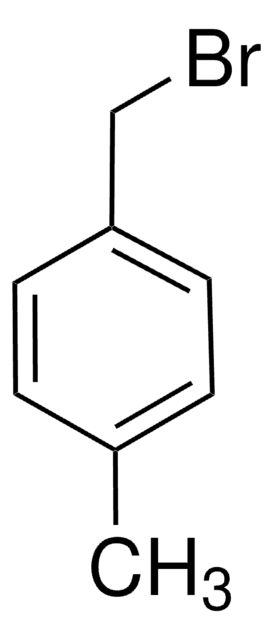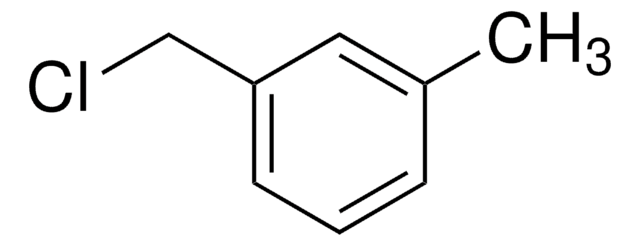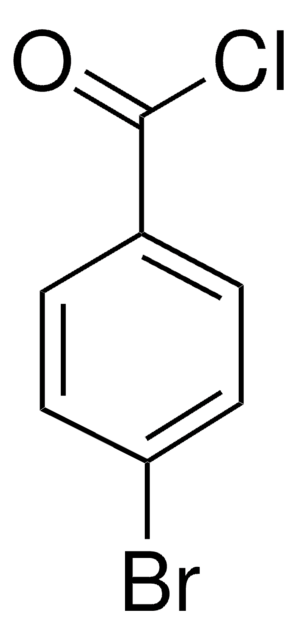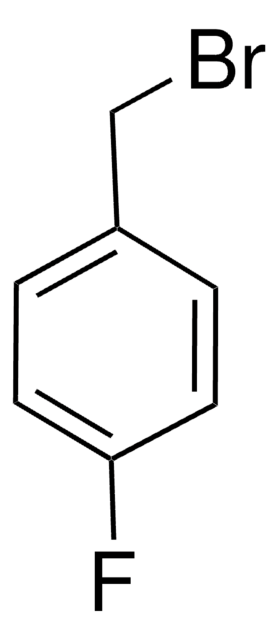209384
3-Methoxybenzyl chloride
97%
Synonym(s):
3-(Chloromethyl)anisole
Sign Into View Organizational & Contract Pricing
All Photos(2)
About This Item
Linear Formula:
CH3OC6H4CH2Cl
CAS Number:
Molecular Weight:
156.61
Beilstein:
636684
MDL number:
UNSPSC Code:
12352100
PubChem Substance ID:
NACRES:
NA.22
form:
liquid
Assay:
97%
Recommended Products
Assay
97%
form
liquid
contains
potassium carbonate as stabilizer
refractive index
n20/D 1.544 (lit.)
bp
124 °C/13 mmHg (lit.)
density
1.078 g/mL at 25 °C (lit.)
1.078 g/mL
functional group
chloro
storage temp.
2-8°C
SMILES string
COc1cccc(CCl)c1
InChI
1S/C8H9ClO/c1-10-8-4-2-3-7(5-8)6-9/h2-5H,6H2,1H3
InChI key
VGISFWWEOGVMED-UHFFFAOYSA-N
Looking for similar products? Visit Product Comparison Guide
Related Categories
Application
3-Methoxybenzyl chloride was used to alkylate 8-benzyloxy-2(1H)-quinolinone in the presence of DMF and NaH. It was also used in the synthesis of diarylmethanes via in situ organozinc-mediated, palladium-catalyzed cross-coupling between benzyl and aryl halide.
Signal Word
Danger
Hazard Statements
Precautionary Statements
Hazard Classifications
Eye Dam. 1 - Skin Corr. 1B
Storage Class Code
8A - Combustible corrosive hazardous materials
WGK
WGK 1
Flash Point(F)
213.8 °F - closed cup
Flash Point(C)
101 °C - closed cup
Personal Protective Equipment
dust mask type N95 (US), Eyeshields, Gloves
Choose from one of the most recent versions:
Already Own This Product?
Find documentation for the products that you have recently purchased in the Document Library.
Customers Also Viewed
N-vs O-Alkylation in 2 (1H)-quinolinone derivatives.
Guo Z-X, et al.
Tetrahedron Letters, 40(38), 6999-7002 (1999)
Christophe Duplais et al.
Chemical communications (Cambridge, England), 46(4), 562-564 (2010-01-12)
A remarkably simple entry to unsymmetrical diarylmethanes has been developed that relies on an in situ organozinc-mediated, palladium-catalyzed cross-coupling. Thus, by mixing a benzyl and aryl halide together in the presence of Zn metal and a Pd catalyst, diarylmethanes are
Prachi Singh et al.
SLAS discovery : advancing life sciences R & D, 22(4), 440-446 (2017-03-23)
Analysis of interactions between molecules is of fundamental importance in life science research. In this study, we applied weak affinity chromatography, based on high-performance liquid chromatography and mass spectrometry, as a powerful tool for direct analysis of the components of
Our team of scientists has experience in all areas of research including Life Science, Material Science, Chemical Synthesis, Chromatography, Analytical and many others.
Contact Technical Service